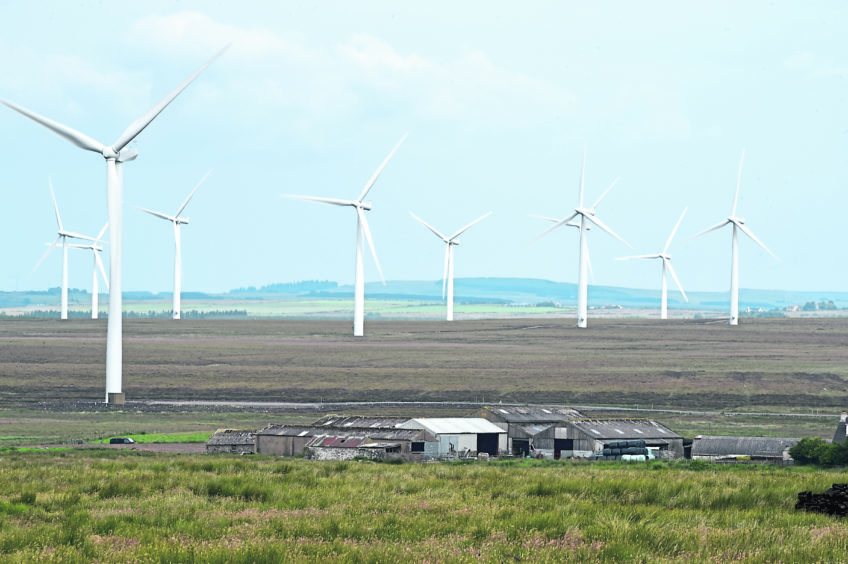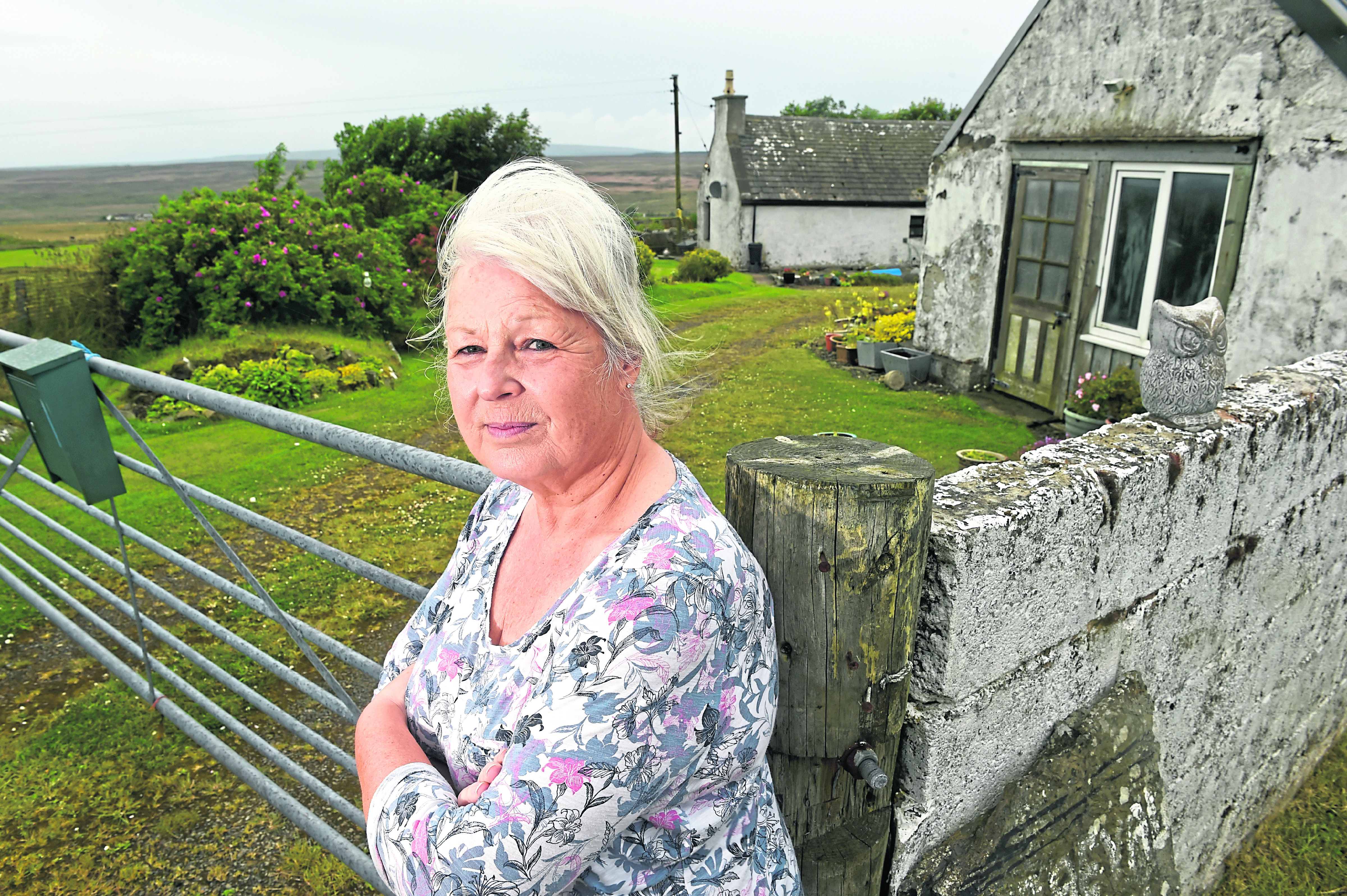
Angry Caithness residents affected by approval of a 21-turbine wind farm have vowed to fight on to protect their landscape.
Reay Area Windfarm Opposition Group (Rawog) say the fight to stop their village being encircled by a “ring of steel” has caused them untold stress over the past six years.
They say they are weary and disillusioned, but for the sake of their unique heritage, landscape and wildlife, will fight on to stop more turbines coming their way.
The small north coast township has the Baillie wind farm on its doorstep: 21 turbines, each 360ft.
There are also the Forss 1 and 2 farms, adding an additional six 260ft towers, while each site has associated pylons and substations that extend their visual impact.
Soon Reay will look out on a further 21 turbines – stretching 450ft into the sky from ground to blade tip – less than a mile away on the Limekiln estate, despite hundreds of objections.
Highland Council initially refused planning permission for Limekiln but after a public local inquiry, developer Infinergy won its case at Scottish Government level.
Local councillor Matthew Reiss says the Limekiln approval process makes a mockery of localism and democracy.
He said: “I’ve gone through the Scottish reporter’s report and there is literally no mention of the fact that hundreds of local people said no to this wind farm.
“There is one tiny paragraph which says the Scottish Government needs to carry out research to assess the impact of wind farms in places like Caithness.
“I find it extraordinarily complacent that they say this research needs to be done. It should have been done already.”
Rawog member Heather Thompson said opposition to the Limekiln scheme had proved expensive.
“We raised money to fight Limekiln and we won, but when the developers resubmitted the same application we had to start from the beginning and raise money again. For a small community that was extremely hard.”
Rawog raised more than £15,000 to fight the proposals, money they say they would rather have spent on local groups and charities.
They liken their plight to a David and Goliath struggle against multinational companies with very deep pockets and the odds heavily weighted against them by government policy.
Rawog member and Caithness West community councillor Jillian Bundy said: “The reporters acknowledged that there will be a huge impact on the area visually but it’s almost as if it doesn’t matter, because there’s not many people.
“They argue that because we have Dounreay the landscape is already industrialised, but Dounreay is relatively well contained. It is not at a height. You can’t see if from all around and, importantly, it doesn’t move like turbines do.”
Resident naturalist and ornithologist Eric Maughan added: “These turbines are 20ft taller than the London Eye, which is a big structure but contained in a city with lots of other big structures.
“They’re going to put 21 London Eyes in this landscape.
“They’ll be in your face the whole time. You will be able to hear them whirring.
“It makes a mockery of the Scottish Government’s designation of this as wild land.”
The lack of jobs after the construction stage – likely to be one maintenance post per 18 turbines – and Limekiln’s impact on tourism are also on Reay residents’ minds.
Mrs Thompson said: “With Dounreay being decommissioned there will be fewer and fewer jobs, so the main driver of jobs will be tourism. This is going to take tourism away.”
With Caithness facing year-on-year depopulation, residents fear the turbines might even push some families to leave.
Mrs Bundy said: “It’s difficult at this point to know whether people will stay once they are constructed. We will certainly think about it. We feel like victims of Scottish Government policy on renewables.
“We’re supposed to live in a democracy, but while every organisation or public body that was involved as a consultee objected to this, they have all been completely ignored.”
Ms Bundy also dismissed the potentially significant community benefits offered by developers – Infinergy suggested they could be as much as £8 million –as “community bribes”.
She said: “Yes it is money for local groups, for village halls, small community grants for things, but it is a bribe.”
Developer insists site will play an important part in hitting targets
Infinergy chief executive Esbjorn Wilmar believes the firm selected the perfect place for its latest project.
He said: “The Limekiln Wind Farm site is excellent for wind development. It has a very good wind resource and meets all environmental and technical requirements.
“The project will make an important contribution towards Scotland’s renewable energy targets.”
He said the wind farm will also offer significant benefits to the community during its lifespan.
“Limekiln Wind Farm comes with a community benefit fund of £5,000 per MW of installed capacity,” he said.
“That equates to at least £315,000 per year or nearly £8 million over the lifetime of the development (based on 3 MW turbines).
“In addition, up to 10% of the project will be made available to the local community as a shared ownership opportunity, giving the potential to increase the economic value of the wind farm across Caithness,” he added.
A Scottish Government spokeswoman, meanwhile, reiterated its support of Scotland’s growing wind energy industry.
She said: “With public backing for wind energy at a record high across Scotland, and amid a global climate emergency that requires decarbonisation of our economy, we strongly support the development of renewables, while providing appropriate protections for our landscapes, natural heritage and local communities.”
She added: “The Scottish Government has measures in place to ensure all relevant factors – such as any environment impact, health impact or impact on tourism – are all considered throughout the planning process for wind farms before any decisions are made.”
Recommended for you

